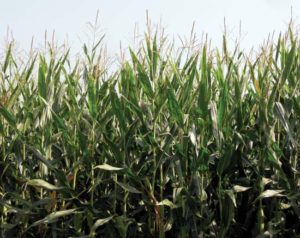Virus Resistance in Plants
Transgenic virus- resistant plants were first produced in 1986 by genetically engineering tobacco plants to express the coat protein of tobacco mosaic virus. There are a number of different strategies for using molecular technology to integrate or create new resistance factors in plant virus systems. A number of anti viral strategies based on transgenes from a surprisingly wide variety of sources have been developed. These include the use of viral genes coding for proteins involved in the replication cycle and in systemic transport of viruses within the plant, the use of interfering viral RNA sequences, and the use of transgenes derived from plant and animal sources.
Following are the strategies used to confer virus resistance in plants:
- Cross protection
In cross protection the plant is inoculated with milder strain of the target virus. This technique was applied to several important crops like tomato, papaya and citrus fruits. Application of this technique met with mixed success. The main drawbacks of this technique were:
i. Degree of virulence of each viral strain vary from crop to crop.
ii. Milder strain of the virus that provides protection to one crop may cause serious diseases on varieties growing nearby.
- Pathogen derived Resistance
The concept of pathogen derived resistance (PDR) strategy is based on the insertion of resistant genes that are derived from the pathogen (virus) into the host plant.
Strategies of Pathogen derived resistance:
- Coat Protein Mediated Resistance
Coat protein mediated resistance in many systems is correlated with the inhibition of virus replication at the initial point of infection. This resistnace takes place in the form of reduced memberanes of infection sites on the leaves.Thereby leading to the disruption of initial cycles of virus.
- Replicase –Mediated Resistance
Plant viruses encode specific Replicase protein that enable the virus to replicate in host cell. This event tale place by co-interaction of virus encoded replicase protein and host factors.Plants having replicase transgene were reported to confer resistance against challenging inoculum. Plants transformed with a modified RNA dependent RNA polymerase gene conferred resistance which was strain specific.Replicase transgene triggers two possible mechanisms :
i. Targeting replication of challenging virus in the cell.
ii. Limit the systemic spread of the virus by interacting with movement proteins.
- Movement protein Mediated Resistance
Plant viruses encode special movement proteins (MPs) which enable them to spread the infection between adjacent cells as.This movement involves plasmodesmata and the channels that transverse that transverse plant cell walls and thus provide a systemic movement of virus between cells and tissues. A plant having transgenic expression of mutated viral movement protein will confer resistance through competition for plasmodesmatal binding sites between the mutant MP and functional MP of the challenging virus.
- Antisense RNA Strategies
In many cases viral genomic sequences have been introduced into transgenic plants in such a way that the negative viral strand (antisense) is transcribed. The aim of this strategy has been to downregulate gene expression by antisense RNA in plants and thereby to obtain virus resistant plants.
Disease Resistance
Disease caused by bacteria and fungi are currently some of the major factors limiting crop production worldwide. In addition to negative effects of yield, diseases can also impact the post harvest quality of food. A large number of plant defense response genes encoding anti microbial proteins have now been cloned.Most of these are transcriptionally activated in response to infection or expose to microbial elicitor macromolecules. The products of defense response genes may include:
- Hydrolytic enzymes, e.g chitinase, 1-3 β-D glucanase and other pathogenesis related (PR) proteins.
- Ribosome inactivating proteins (RIPs).
- Antifungal proteins (AFPs).
- Biosynthetic enzymes for the production of anti-microbial phytoalexins.
- Wall bound phenolics, osmotins, thionins, lectins etc.
- Hydrogen peroxide
Transgenic plants generated in various crops for resistance to fungal and bacterial diseases.
|
Crop |
Gene transferred | Controlled Pathogen |
| Tobacco | Chitinase |
Rhizoctonia solani |
|
Potato |
PR5 | Phytophthora infestans |
| Kiwi fruit | 1,3-β glucanase |
Botrytis cinerea |
|
Rice |
Cecropin | Bacterial pathogen |
| Tobacco | Stilbene synthase |
Botrytis cinerea |
Herbicide Resistance

The use of herbicides to control weeds plays a pivot role in modern agriculture. A mojor effort has been developed in several laboratories to engineer herbicide resistant plants.More progress has been achieved in herbicide resistance as single genes govern the resistance. Three approaches have been followed :
- Over production of a herbicide sensitive biochemical target.
- Structural alteration of a biochemical target resulting in reduced herbicide affinity
- Detoxification-degradation of the herbicide before it reaches the biochemical target inside the plant cell.
Transgenic plants against various herbicides such as phosphinothricin, glyphosate, sulfonylurea, imidazolinones, bromoxynil, atrazine, 2,4 D, sethoxydim etc. have been generated in different food crops,vegetables, horticultural and ornamentals species.Herbicide resistant transgenic plants have been reported in various crops but in cotton, flax, canola, corn soyabean these have already been released for commercial cultivation and the list is growing rapidly.

